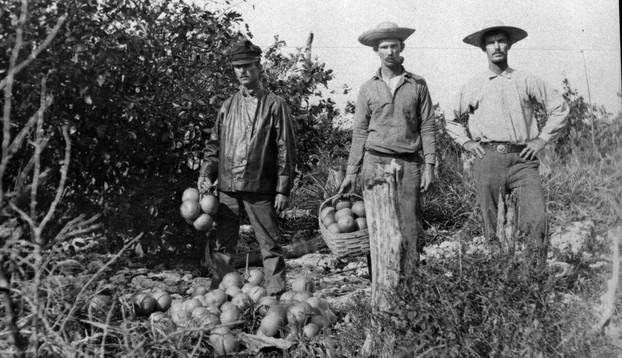Florida consistently claims leadership among the four above-mentioned states in terms of highest and most profitable levels of grapefruit production.Texas nevertheless confers upon the grapefruit a hallowed status as a special edible which cooperates in making year-round fresh supplies available for year-round customer demand. The lone star state in fact has the grapefruit in its delectable, juicy, seedless red form as the official state fruit.
Specifically, on May 17, 1993, then Governor Dorothy Ann Willis Richards (September 1, 1933 – September 13, 2006) signed House Concurrent Resolution No. 75 of the 73rd Texas State Legislature:
"WHEREAS, The State of Texas has traditionally recognized a variety of official state symbols as tangible representations of the proud spirit and heritage of our state; and
WHEREAS, The bluebonnet, the pecan tree, and the mockingbird are examples of natural specimens that serve to exemplify the great diversity of the Texas landscape, while the state dish, chili, fittingly represents another aspect of our shared culture as Texans; and
WHEREAS, In keeping with this custom, the designation of the Texas Red Grapefruit as the official State Fruit of Texas will provide suitable recognition for this outstanding food resource; and
WHEREAS, First discovered by Texas citrus growers in 1929, this variety of grapefruit has been carefully nurtured and perfected over time and is renowned for its sweetness and rich, red interior; and
WHEREAS, As nutritious as it is palate pleasing, the Texas Red Grapefruit contains no fat or sodium, lowers high levels of blood cholesterol, boosts iron absorption, is low in calories, and is rich in vitamin C; and
WHEREAS, This delicious fruit also is a boon to the state economy, generating more revenue than any other tree fruit produced within our borders; and
WHEREAS, As distinctive as the proud state from which it originates, the Texas Red Grapefruit will serve as a fitting emblem for the bounties of nature with which our state is blessed; now, therefore, be it
RESOLVED, That the 73rd Legislature of the State of Texas hereby designate the Texas Red Grapefruit as the official State Fruit of Texas."


![grapefruit Citrus x paradisi Macfad. (pro sp.) [maxima × sinensis] grapefruit Citrus x paradisi Macfad. (pro sp.) [maxima × sinensis]](/static/uploads/en/module/image/2013/12/04/2013-12-04_16-20-18_165.622x621.jpg)















 Are Hawaiian Huakai Po Nightmarchers Avenging Halloween Thursday?on 10/02/2024
Are Hawaiian Huakai Po Nightmarchers Avenging Halloween Thursday?on 10/02/2024
 Mailing Addresses for 2023 Form 4868 Extending 1040 and 1040SR April 15, 2024, Due Dateon 04/15/2024
Mailing Addresses for 2023 Form 4868 Extending 1040 and 1040SR April 15, 2024, Due Dateon 04/15/2024
 Mailing Addresses for 2023 Forms 1040 and 1040SR Filed in 2024on 04/15/2024
Mailing Addresses for 2023 Forms 1040 and 1040SR Filed in 2024on 04/15/2024
 Mailing Addresses for 2022 Form 4868 Extending 1040 and 1040SR April 18, 2023, Due Dateon 04/13/2023
Mailing Addresses for 2022 Form 4868 Extending 1040 and 1040SR April 18, 2023, Due Dateon 04/13/2023



Comments
For those wondering about top grapefruit-producing countries in the world:
The USDA Foreign Agricultural Service's list of 2024/2025 grapefruit production identifies the top five grapefruit-producing countries (https://www.fas.usda.gov/data/product...) as:
Market ---------- % Global Production -- Total Production (2024/2025, Metric Tons)
China ------------ 76 percent -------------- 5.25 Million
Mexico ------------ 7 percent --------------- 489,000
South Africa ----- 6 percent ---------------- 425,000
United States --- 4 percent ---------------- 271,000
Turkey ------------ 3 percent ---------------- 180,000
February is national grapefruit month!
What is the most popular way to ingest my favorite fruit?
Grapefruit ice cream from my family recipes always matters even as everybody munches marvelously on my family's cake, drink, fresh-fruit, muffin, salad, soup manifestations and on my family's matching grapefruit fresh or processed with vegan meat and vegetables ;-D!
jptanabe, Me too: I love grapefruit, especially ruby reds!
Grapefruits grow in greenhouses. Would that be an option for you?
cmoneyspinner, That is so charming that neighbors shared their bounty so that you have such wonderful memories of neighborliness, generosity, and sharing. For me, there's nothing so satisfying as a fruit freshly fallen on the ground or freshly plucked from its tree.
AbbyFitz, Such an irony that you don't like grapefruit, what with all those trees planted by your father!
I love grapefruit, especially those ruby red ones. Unfortunately, I live in a cold climate (we have real winters here!) so I couldn't grow them.
Being from Miami, Florida, it's very common to have citrus fruit trees in your back yard. What I really liked is that neighbors would share their bounty with each other. "Hey! My fruit tree is dropping fruit on the ground. Come on in and take what you want!" Or sometimes a neighbor would come and give my mom a large bag of fruit that came from their tree. Memories. That was back in the day. Good times! Good times! :)
My father planted fruit trees all over our yard. We've got white and pink grapefruit. They're big trees and produce a lot. Unfortunately I don't like grapefruit :)